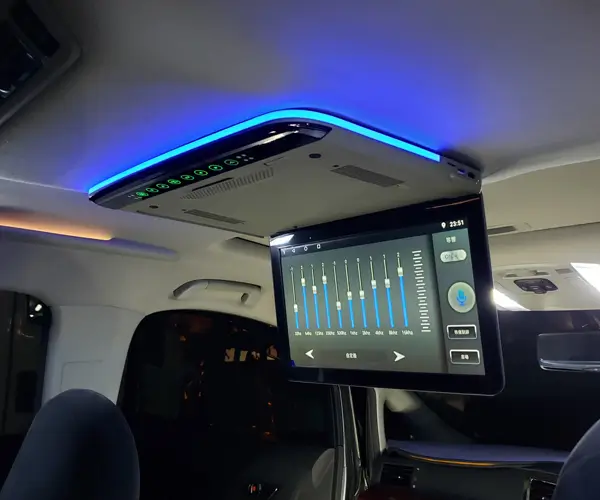Embracing Compact Power — The Rise of N20 Gear Motor Right Angle
In the world of modern machinery, robotics, and automation, the quest for efficient, compact, and reliable motor solutions is unending. Among these solutions, the N20 gear motor with a right angle configuration stands out, offering a blend of versatility and power that caters to a broad spectrum of applications. Whether you’re an engineer designing a robotic arm or a hobbyist building a DIY project, understanding the intricacies and advantages of these tiny yet mighty motors can unlock new levels of precision and innovation.

What is an N20 Gear Motor Right Angle?
The term “N20” refers to a specific size of DC gear motor. The “N” signifies the small, cylindrical shape, roughly 12mm in diameter, and 20mm in length. These miniature motors are known for their compactness, efficiency, and affordability, making them ideal for applications with space constraints. When coupled with a gearhead—a device that reduces speed and increases torque—the N20 motor becomes even more adaptable.
Now, incorporating a right angle gear drive means that the output shaft is positioned at a 90-degree angle relative to the motor's axis. This configuration allows for the transfer of rotational motion in a perpendicular direction, giving designers strategic flexibility in how they fit the motor into their assemblies. This geometry is particularly beneficial when direct inline placement isn't feasible due to spatial limitations or design constraints.
The Mechanics Behind N20 Gear Motors with Right Angle Drives
At the core, the N20 gear motor is powered by a small DC motor that spins its internal armature when voltage is applied. The gear reduction mechanism—typically a planetary, spur, or bevel gear system—reduces the motor’s high rotational speed to a more usable torque output while maintaining precision.
In the right angle version, the gear mechanism often involves bevel gears or helical gears that change the axis of rotation. This internal gear arrangement ensures smooth operation and minimal loss, while providing high torque density within a tiny footprint. Thanks to their compact profile and efficient design, these gear motors can deliver torque ranging from a few grams to over a hundred grams, depending on the specific model, gear ratio, and load conditions.
Design Considerations and Innovations
Precision manufacturing is vital for the performance of N20 gear motors. Even minor discrepancies in gear alignment or bearing quality can significantly impact efficiency and longevity. Modern designs use high-grade materials such as hardened steel gears and high-quality bearings to optimize durability and reduce wear over time.
Another innovation relates to the customization options available. Manufacturers now offer various gear ratios, typically ranging from 3:1 to 100:1 or higher. Higher gear ratios imply more torque but lower output speeds, which can be tailored based on specific needs. For robotics, miniaturization, or medical devices, the right balance can make a significant difference in overall system performance.
Applications: Because Size Matters
The true strength of the N20 gear motor with a right angle output lies in its adaptability across diverse fields. Here’s a sneak peek into some of their most common applications:
Robotics: Compact robotic arms or mobile robots benefit from right angle gear motors when space is tight. They can precisely control movements in confined quarters, such as grippers or camera mounts.
Automated Doors and Latches: The ability to fit into narrow spaces makes these motors perfect for small actuator systems that require opening or closing mechanisms with high precision.
Medical Devices: The miniaturization of equipment like portable diagnostic tools or surgical robots often relies on tiny, reliable motors, and the right angle configuration enables seamless integration into complex assemblies.
Consumer Electronics: Accessories like camera sliders, motorized stands, or adjustable mounts often use N20 gear motors for smooth, controlled motion.
Educational Projects and DIY: Their affordability and ease of use have made N20 gear motors a favorite among hobbyists, STEM educators, and open-source designers aiming to bring automation ideas to life with minimal fuss.
Advantages of the N20 Gear Motor Right Angle
What truly elevates the N20 gear motor with a right angle configuration are the benefits it offers:
Space Efficiency: The internal gear setup and perpendicular output reduce the need for additional linkage or mounting brackets, saving precious space.
High Torque in a Small Package: Despite their tiny size, these motors can provide substantial torque for lightweight applications, thanks to durable gear trains.
Easy Integration: With standardized connectors and mounting holes, these motors plug and play into a variety of systems, enabling quick prototyping.
Cost-Effectiveness: Their mass production and straightforward design make them accessible without sacrificing performance.
Customizable Ratios and Options: Whether you need slow, torque-heavy motion or fast, lightweight rotation, you can select gear ratios and configurations accordingly.
Next, we will delve into the specific design features, material choices, and innovative enhancements that make these motors a standout choice in countless applications. We’ll also highlight some real-world case studies illustrating their versatility.
Stay tuned for Part 2, where we explore optimization techniques, troubleshooting tips, and future trends shaping the N20 gear motor right angle landscape.
Kpower has delivered professional drive system solutions to over 500 enterprise clients globally with products covering various fields such as Smart Home Systems, Automatic Electronics, Robotics, Precision Agriculture, Drones, and Industrial Automation.




































